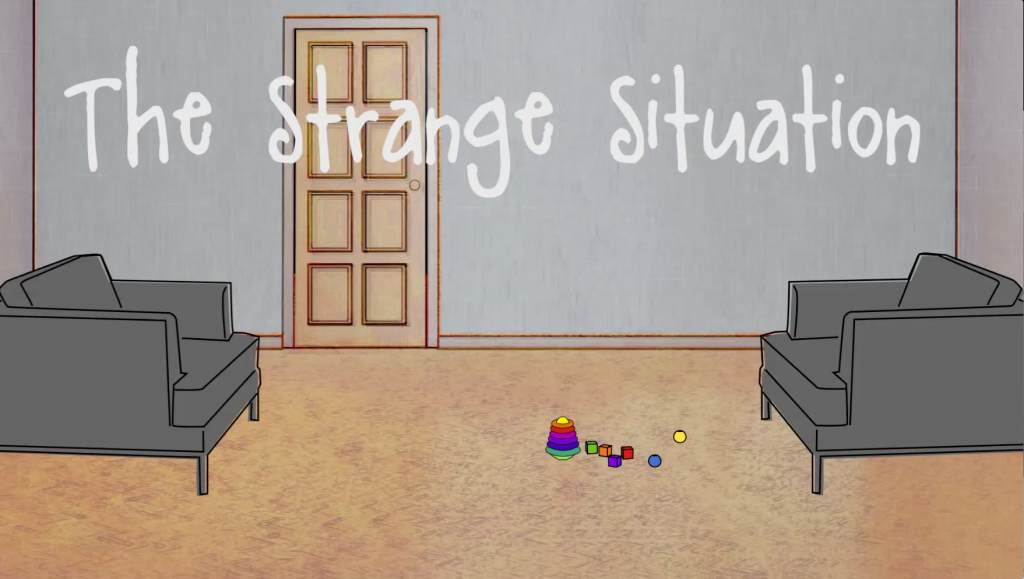
When infants are raised in a family, they tend to form an attachment to their primary caregiver by their first birthday. But, the quality of attachment will vary from one child to another. When attachment is optimal, it promotes joy, comfort, and a sense of security.
Psychologist Mary Ainsworth designed a research procedure to measure the quality of attachment between 1- to 2-year-old children and their caregivers. It is called the “Strange Situation.” During the Strange Situation the toddler experiences stress from an unfamiliar playroom, an unfamiliar person, her mother’s departure from the playroom, and being left alone in the playroom. The Strange Situation is designed to gradually increase the child’s sense of threat. This activates her attachment system and desire for comfort. Researchers observe toddlers’ behavior when their parent leaves them and when their parent returns.
The Strange Situation is a way researchers measure attachment. It is not used in clinical settings. However, we can use children’s attachment behavior to gain insight into the quality of their current and future relationships.
On the next page, you will watch a video animation of The Strange Situation.
-
- Interactional synchrony
- caregivers and infants respond to each other in a reciprocal and rhythmic manner